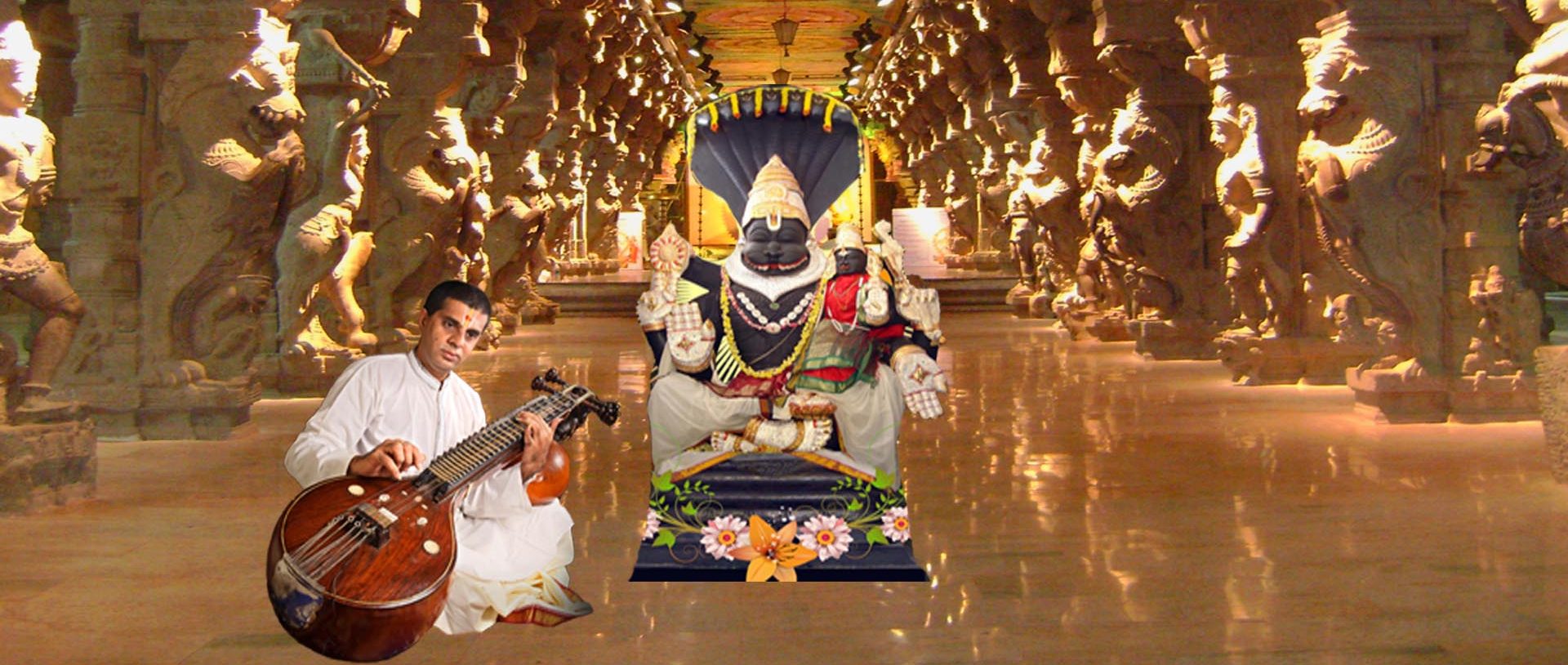The nervous system can be likened to the electrical wiring of a house, transmitting electrical impulses directly from the brain to the muscles. This underscores the importance of being mindful of every movement of the fingers during the process of learning Veena technique. At this stage of musical preparation, no movement should be left to chance. It is during performance where one can relinquish control and allow for spontaneity.
The spinal cord serves as the primary conduit for distributing all the impulses originating from the brainstem. This underscores the importance of finding a seated position that applies minimal pressure to the lumbar region, where the spinal cord terminates. Any tension in this region is transmitted via the “highway” to the entire motor system
Playing the Saraswati Veena requires intricate neuro coordination between the brain, the spinal cord, and the peripheral nervous system. Here’s a detailed explanation of the neuro coordination mechanism involved in playing the instrument:
Perception and interpretation: The first step in playing the Veena involves the perception and interpretation of the music. This process occurs in the auditory cortex of the brain, which is responsible for processing sound information. The auditory cortex interprets the pitch, timbre, and rhythm of the music.
Planning and initiation: Once the music is perceived and interpreted, the motor cortex of the brain is activated to plan and initiate the movements required to play the Veena. The motor cortex sends signals through the spinal cord to the peripheral nervous system, which consists of the nerves that connect the spinal cord to the muscles and other tissues.
Muscle activation: The signals sent from the motor cortex activate specific muscle groups in the arms, hands, and fingers required for playing the Veena. The biceps and triceps muscles are involved in the movement of the upper arms, while the forearm muscles are involved in the movement of the lower arms. The hand muscles and finger muscles are also activated to move the hands and fingers to the appropriate positions on the fretboard.
Sensory feedback: As the muscles are activated, they send sensory feedback to the brain, providing information about the position, velocity, and force of the movements. This feedback is essential for accurate control of the movements required for playing the Veena.
Proprioception: Proprioception is the sense of the relative position of body parts and the effort required to move them. It allows musicians to maintain the correct posture and hand position while playing the Veena. Proprioceptive information is provided by sensory receptors located in the muscles, tendons, and joints of the arms, hands, and fingers.
Coordinated movement: Finally, all of these processes come together to produce coordinated movement of the arms, hands, and fingers required for playing the Veena. The movements must be precise and accurate, with the correct timing and pressure required to produce the desired sound.
Playing the Saraswati Veena involves a complex interplay of perception, interpretation, planning, muscle activation, sensory feedback, proprioception, and coordinated movement. The neuro coordination mechanism involved in playing the Veena requires extensive practice and training to develop the necessary skills and techniques

